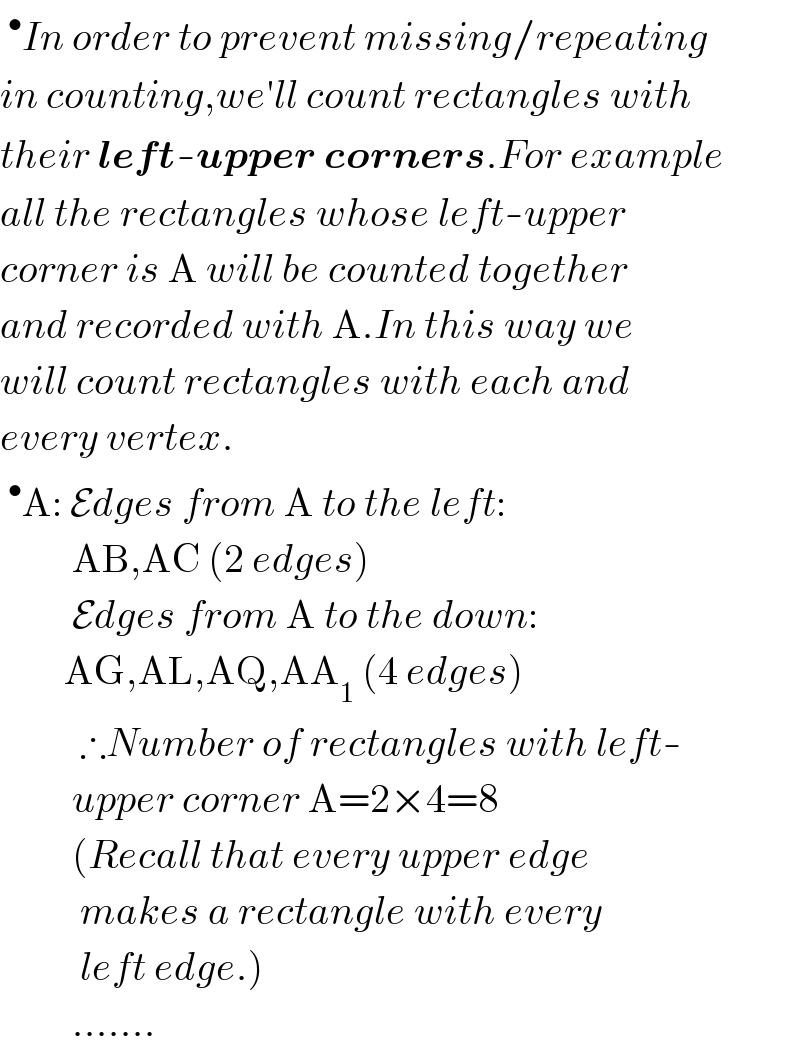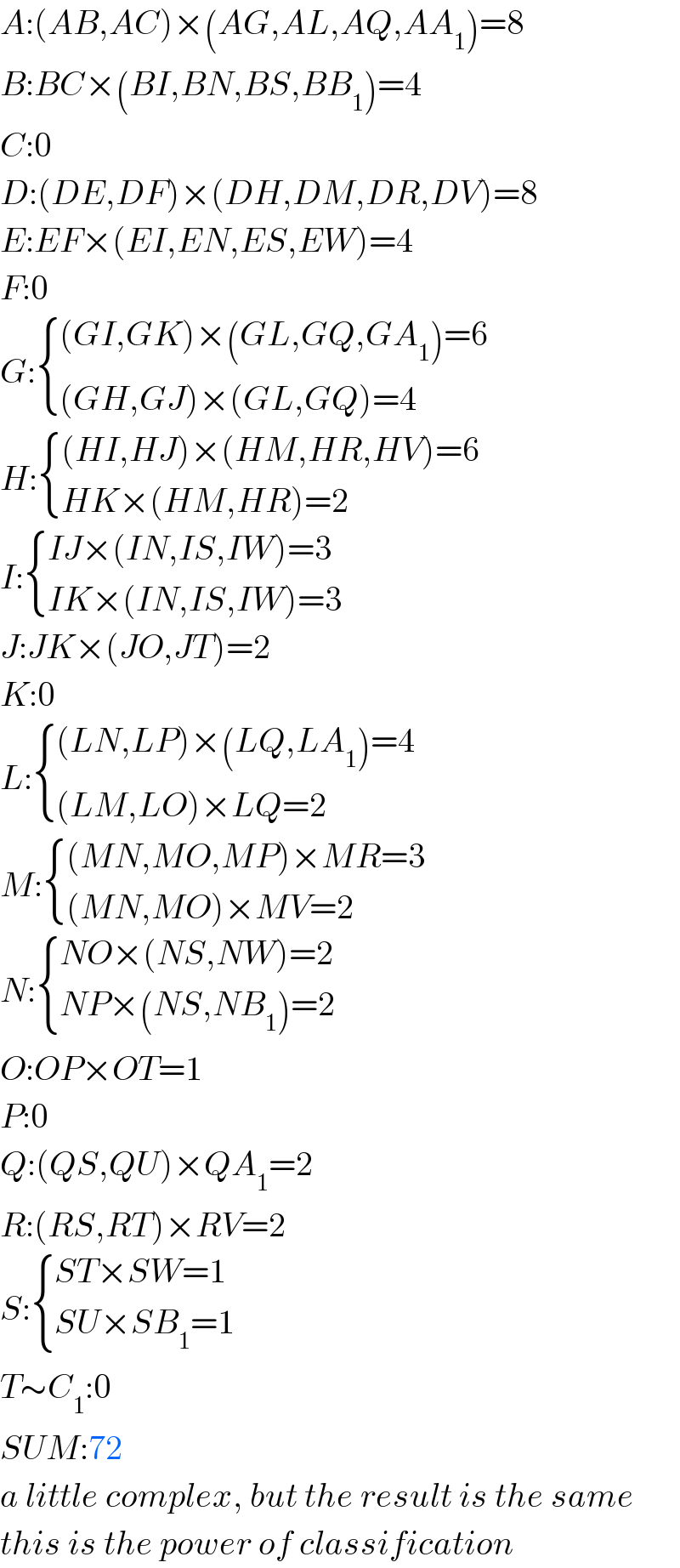
Question and Answers Forum
Previous in Permutation and Combination Next in Permutation and Combination
Question Number 67281 by Tony Lin last updated on 25/Aug/19

Commented by mr W last updated on 25/Aug/19

Commented by Tony Lin last updated on 25/Aug/19

Commented by Tony Lin last updated on 25/Aug/19

Commented by Tony Lin last updated on 25/Aug/19

Commented by Tony Lin last updated on 25/Aug/19

Commented by Rasheed.Sindhi last updated on 25/Aug/19

Answered by Rasheed.Sindhi last updated on 25/Aug/19

Commented by Rasheed.Sindhi last updated on 25/Aug/19

Commented by Tony Lin last updated on 25/Aug/19

Commented by peter frank last updated on 25/Aug/19

Commented by Rasheed.Sindhi last updated on 25/Aug/19

